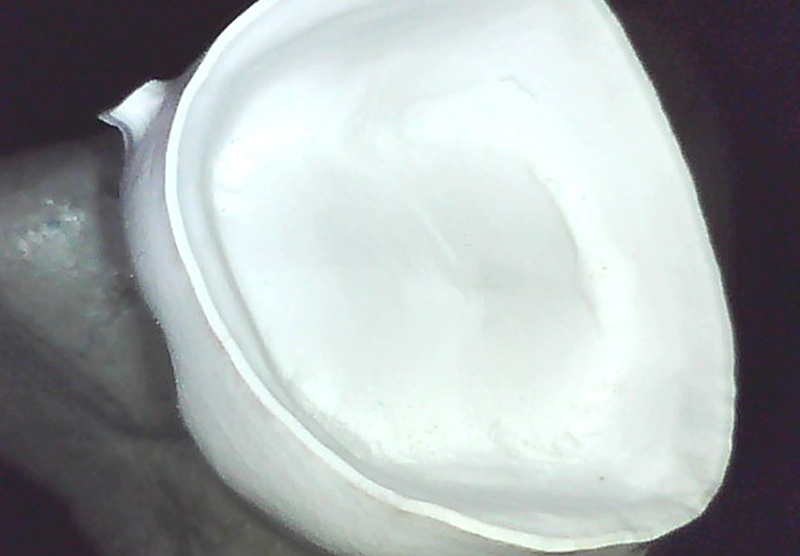I happened to run across a blog entry from a popular dental distributor's blog site on the subject of common causes for chipping zirconia.
Reading through the blog, it struck me that the entry itself really did not address the CAUSE of the chipped zirconia. It provided a “Band-aid” (and a very big one at that) for trying to avoid the problem.
The “Band-aid” is one that tries to make up for the REAL causes behind chipped margins and one that the majority of sub-$20,000 (to even as much as $40,000) mill solutions suffer from. Sadly, practitioners, laboratories and milling centers have come to accept this problem as the norm and typical for all dental milling machines.
But great news, folks; it doesn't have to be this way!
Unlike with Versamill solutions, to preserve the integrity of restorative margins, these inferior solutions must reinforce the margin area with additional stock that must later be removed by manual methods.
In the case of the referenced blog post, the suggestion was to provide a minimum of 200 microns to be reasonably confident in maintaining the integrity of the gingival margin.
The Real Story

The margin is the area most prone to damage during the milling process. To preserve the integrity of the margin, additional thickness is added to the margin in software to strengthen it during milling and provide additional stock in anticipation of violation during the milling process. This is what is called "margin reinforcement."
While the margin reinforcement feature (which can be as much as 200µm in inferior systems) is helpful during milling, it must be manually removed afterward as part of the margin-finishing process.
Worn tooling aside, the primary reasons for margin violations and the subsequent requirement for margin reinforcement include:
- Lack of machine rigidity.
- Machine spindle performance including; internal structural quality, excessive cutting tool run-out, tool deformation etc.
- Weak fixture rigidity including lack of quality machine rotary axis gear reducers.
- Lack of available robust machining strategies or poor output generated from within the CAM software.
- Improper toolpath “processing” from within automated CAM machining templates.
- Combination of any of the above.
The structural integrity of each Versamill machine and fixture coupled with precision, high-torque spindles, robust CAM software and expert machining templates developed from our decades of digital manufacturing experience, enable Versamill users to reliably produce high-quality restorations with clean, thin gingival margins and minimal margin reinforcement — as little as 40µm.


*Notice the difference between the margin quality and amount of margin reinforcement on the crown produced with our Versamill solution on the left compared to the crown produced on a comparably priced, competitive solution on the right.*
Visit our website to learn more.